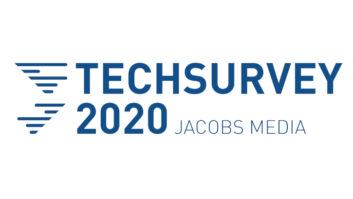Isn’t it good to learn Internet radio is not beyond the financial reach of most non-commercial radio simulcasters subject to the new CRB copyright rates? Isn’t it good to know interesting survival techniques exist for commercial radio simulcasters in spite of the new CRB copyright rates?
The March 2, 2007 Copyright Royalty Board decision gave most non-commercial simulcasters a pass on the high rates imposed on their commercial counterparts … at least up to 159,140 ATH (hours) per month.
The truth is that most non-commercial simulcasters never even come close to streaming the threshold limit hours per month. Sure, some metro-market non-comms may exceed this CRB imposed threshold, but these same radio stations generally have large budgets and listener support that will allow them to keep their Internet streams going.
Our radio-industry-focused streaming media company, Barnabas Road, has primarily non-commercial and news, talk and sports radio stations. Consequently, we have had little impact to our business. Other streaming media services, specializing in commercial radio stations, should find ways to help their stations increase advertising revenue or these same stations will have to take other more dramatic actions. None of the actions are pleasant or involve a continued simulcast.
Barnabas Road Media has some commercial simulcasters as clients, but most of our commercial stations are medium- to small-market stations and there is literally no rehabilitation of their online advertising program that could change their financial picture from getting out of the now (post-CRB ruling) deeper red.
Most of these stations previously could not make a profit at the lower copyright fees. I cannot fathom how the CRB judges could impute some wildly increased online advertising revenue to any radio station except the largest metro-market stations having hundreds of thousands if not millions of daily online listeners. The same economics do not flow down to commercial simulcasters, who often have fewer than 10,000 listeners in an entire month.
As president of BRM, and for the benefit of our existing and potential customers, I have tried to come up with ideas for medium and small commercial simulcasters to survive. We have two ideas.
For your consideration
The first is for a commercial Webcaster or simulcaster to view his online production as simply content, and then to sell the simulcast rights of that content to a third party. If that third party happens to be a 501 (c)(3) tax-exempt organization, that third party becomes a non-commercial Webcaster, picking up the much lower copyright fees.
The radio station would continue to pay the ASCAP, SESAC and BMI copyright fees as usual, and the third party buying the online rights would pay the SoundExchange performance royalties. The third party could pay the radio station for each time a media player opens (starting with a third party opening wrapper message); or it also could pay for spots inserted in the stream promoting its organization’s goals and fundraising activities. In fact, many commercial radio stations would see their first positive online cash flow from such a rights transfer arrangement.
We view this idea as being a bit radical, but some stations may already have a strong association with a charitable organization that spends money on advertising and that would jump at the chance to have its own online radio channel. The economics could be rewarding for both parties. We call this a Third Party Simulcast Rights Agreement (TPSRA). BRM has a non-legal write up on the concept. Just send us an e-mail asking for a copy of the concept. It is free.
The second idea may seem just as radical as the TPSRA and far from the business model most radio stations operate under currently, but offering a “subscription-based service” instead of closing down the simulcast may be the alternative that makes the most sense.
BRM just released a new subscription service plan using our Digital Rights Management software to manage the subscriptions and a per-subscription monthly streaming fee that allows the station to unitize its streaming media and copyright fees on a per-subscription basis.
A 64 kbps stream would cost the station $1.00 per month per subscriber, and under the current CRB ruling the royalty would equal $2.13 per month based upon an estimated 20 hours of listening per subscriber per week. Satellite radio numbers currently are only 11 hours of listening per week. So for $3.13 per month per subscriber, a station’s non-operational expenses can be known and incorporated into the subscription price.
You could charge $4, $5, $6 or maybe even $8 per month and possibly even plan for a profit. Once the minimum annual fees are overcome with 80 to 100 subscriptions, simulcast expenses are proportionate directly to the revenue generated by the subscription fees.
Think about the possibilities in having your on-air broadcast promoting (selling) the subscription service plan. What an advantage broadcast radio has in this regard.
However, you might have to make your online subscription service special with online-only content, promotions, interviews, concerts, etc. We think radio stations would find their daytime online office listeners still want to hear their local news weather, sports and favorite shows if they were somehow available — even if it did have a cost associated with its use. Place your high-school sports on the online version. Invite churches to have their worship services online at a reduced rate. In short, be creative.
Think of the other ways you could use your online subscription service. Give your large advertisers a subscription and make it a special promotional giveaway. Sure, there is a cost but the copyright cost is only realized if that person actually listens to the online broadcast.
Broadcast radio may not be ready for a business model where the listener pays for what he or she hears, but many have come to expect to be able to hear their favorite radio station over the Internet. If your online broadcast goes away, so may that listener from your radio station totally. Your loyal listener may replace your station with another local radio station that has found a way to remain online.
Think of the survival of your online broadcast in terms of what you have already invested in building an online audience. Think of the loyal listeners you could lose if you close the simulcast down, and think of the unrealized potential that has driven the RIAA to try and force you away from the Internet. They see the projected growth in Internet radio listenership, and having to share 210 million listeners per month with every small radio station is something they just don’t want to happen.
Stay the course
The last time the copyright threat surfaced, many radio stations abandoned their online audience. They gave up and some other online music provider quickly snatched away an easy new customer. Don’t let everything you have invested in building an online audience be flushed down the toilet without a fight. The future of radio indicates that the record labels are playing a land-grab game. If they can run you off of your claim now, they win in the long run — or so they think.
The truth is that even the record labels don’t really understand how they will make money in the future in this new digital world. But they are willing to drive their stake in the ground today and fight for market domination.
Now you may be thinking, “I’m not in the Internet radio business. I am an over-the-air radio broadcaster and this Internet thing is just a fluke and of little importance to my broadcast operation.” If so, you are in denial and have grounded your beliefs in history, not in the reality of the future. The proof of the reality of Internet radio is evidenced by the decision of the Copyright Royalty Board itself and the position of the RIAA. Internet radio is big business now and it will continue to get bigger and bigger.
Here is the bottom line for commercial radio: We may get some marginal relief from the CRB decision, but most of that relief will come in the form of easier reporting methods and possibly a cap on the number of channel minimum fees. We will see little rate reduction if any.
Consequently, you have to learn how to make money producing online radio in order to survive, even as an over-the-air radio broadcaster. You will slowly become irrelevant in the marketplace if you do not find a way to survive online right now.
Broadcast radio has always been a tough business. It has survived many potential threats not because radio broadcasters have been brilliant and creative, but because radio met the needs of the public and it was where they expected to find it.
HD Radio is plenty of the same old radio only in a digital format. There are hundreds of millions of devices already capable of receiving Internet radio and many more hundreds of millions will be produced and sold before even the first million HD Radio receivers reach the retailer’s shelf.
Currently, I can listen to our customers’ online radio broadcasts on my PC, laptop or cell phone. I do not have to be within the radio station transmitter’s reach. I can be anywhere in the world; I just have to have access to the Internet.
You may feel you don’t have much choice in terms of going to HD, but I would argue you have less choice in getting on and staying on the Internet. If you retreat from any distribution channel, your advertisers and supporters will dry up and go where they can find a more robust and varied audience.
Your broadcast has to be where people expect to find it whether you like it or not. The laws of supply and demand have not changed. They have just gone digital on the Internet for everyone on Planet Earth including broadcast radio.








